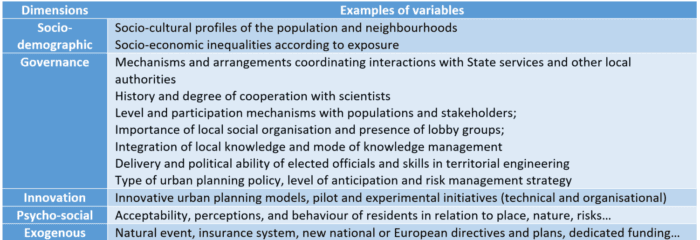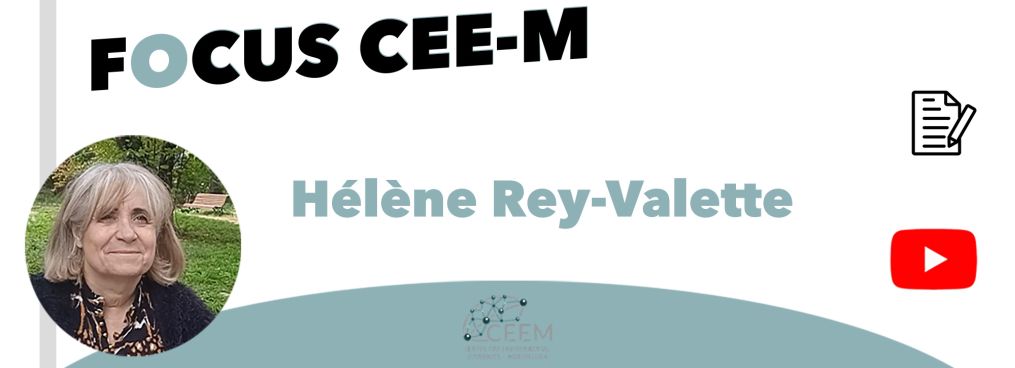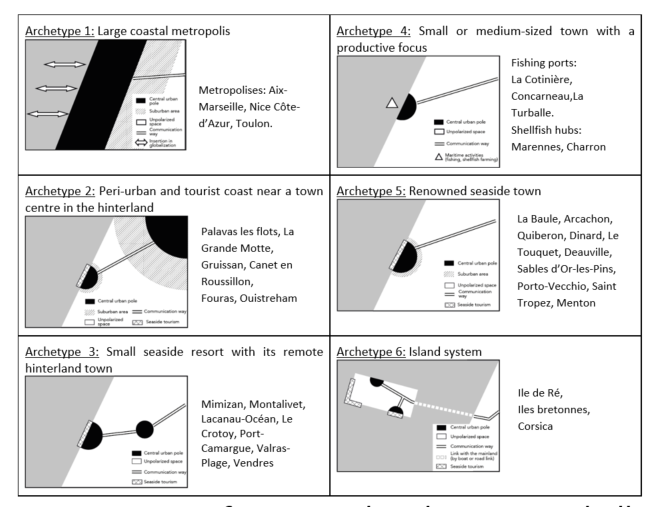Focus on : Rocle, N., Rey-Valette, H., Bertrand, F., Becu, N., Long, N., Bazart, C., Vye, D., Meur-Ferec, C., Beck, E., Amalric, M., & Lautrédou-Audouy, N. (2020). Paving the way to coastal adaptation pathways: An interdisciplinary approach based on territorial archetypes. Environmental Science and Policy, 110, 34-45. doi: http://dx.doi.org/10.4000/vertigo.26537
- Context and issues
During the Climate and Resilience Law voted in August 2021, innovations in terms of urban planning law were made to prepare the spatial reconstruction of territories exposed to the rise in sea level. This spatial reconstruction aims to “reduce the vulnerability of coastal territories by strengthening their resilience. It is part of a development logic that goes beyond the relocation of issues and requires the anticipation of climate changes. It involves an integrated, progressive, and adaptive approach” (SAVE, 2021[1]). Support for these policies involves research on trajectories of adaptation to Climate Change, i.e. the articulation of public policy measures according to changes in the context. This adaptive management approach facilitates both the consideration of uncertainties and appropriation of these measures. The objective of the article is to characterise types of adaptation trajectories, emphasising their dynamic and adaptive character. It is the result of a multidisciplinary reflection (geographers, economists, sociologists, modellers, geologists, oceanographers, anthropologists, ecologists, and political scientists) carried out within the framework of a national working group. This involved pooling the results (i) of ten quantitative surveys carried out between 2006 and 2017 among more than 20,000 people and (II) of the analysis of around ten governance and adaptation support systems.
Adaptive management involves taking into account an increasingly broad diversity of dimensions, including in particular the consequences for inequalities, the emotional and psychological determinants of behaviour, and the adaptation of governance systems and territorial planning tools by favouring so-called “nature-based” solutions, and flexible and participatory processes that promote anticipation, reflexivity, reactivity and learning processes. Note that adaptation processes vary according to the rate and intensity of climate change[2], depending on the responsiveness of the measures implemented. More generally, an approach anchored in the information available (grounded theory approach) is recommended to encourage back and forth between experimentation and conceptualisation. The analysis of experiments, the integration of local knowledge from pilot schemes, and the dissemination of “good practices”, involve trial and error and the pooling of feedback.
- finition of reference archetypes for Metropolitan France
 Figure 1: Description of territorial archetypes with illustrative examples in Metropolitan France
Figure 1: Description of territorial archetypes with illustrative examples in Metropolitan France
- Checklist of adaptation variables
Description of trigger variables

This generic framework allowed the formalisation of descriptive and analytical accounts of evolutionary trajectories specific to the archetypes studied. Knowing that, according to the trajectories, not all variables are effective, an analysis of the occurrence and role of the variables according to the archetypes was carried out by distinguishing slow or rapid developments according to the manifestations of climate change, and in particular the occurrence and extent of the storms and damage observed. Three observations emerge:
- The important role of some trigger variables (financial resources of local authorities, attractiveness, institutional risk management strategy, natural triggering event);
- A significant adaptation differential between slow and rapid trajectories, in favour of slow trajectories which, by mobilising more variables, offer greater room for manœuvre. Thus slow trajectories promote the acceptability of measures, the implementation of pilot mechanisms, or Science-Politics-Society cooperation. They make it possible to reinforce learning and capacities for change, reflexivity, and reactivity.
- The determining or even triggering role of meteorological events often mentioned as a factor of change.
More generally, this adaptation analysis framework illustrates the diversity of factors and the role of governance mechanisms, but also the diversity of trajectories, with inequalities in adaptation capacities that are not always proportional to the degree of urbanisation. Thus the “Large coastal metropolises” archetype presents very contrasting trajectories (“intelligent and resilient metropolis” versus “bankrupt metropolis”) compared to the archetype of “Small and medium-sized towns with a productive focus”, which present more homogenous trajectories, and none leading to collapse (bankruptcy). The trajectories also depend on the ability of territories to intervene on different time scales, according to local taxation and debt levels, urban planning policies, territorial solidarity, political resources and territorial engineering, the psycho-social resources of residents, and regulations.
It should be noted that the adaptation variables relate to different scales (multi-level governance), in particular the regulations and assurances that are imposed on local decision-makers and which strongly guide the logic of adaptation and responsibilities. Thus some aspects of the 2021 Climate and Resilience Law introduce increased accountability of communities and solidarity with individuals, for which the strengthening of preventive information could determine the levels of compensation or insurance contributions, with a risk of accentuating inequalities. Finally, faced with the recent IPCC injunctions on the need to accelerate adaptation measures in response to worsening climate change, it is necessary to explore new avenues to compensate for the weakness of adaptation possibilities in the case of the fastest sea level rise scenarios.
- Some perspectives for economists and social scientists
In a field where the study of constituent variables relating to the availability of sediments and the evolution of the coastline are dominant, the major innovation of this approach concerns consideration of the so-called trigger variables that make it possible to understand socio-economic determinants and territorial adaptive capacity. The diversity and interactivity of these trigger variables require a multi-disciplinary approach, falling within the scope of planning policies and territorial governance. The contribution of economists improves the design of adaptation policies and evaluation during decisions: for example, the question of the value of goods in a context of uncertainty on their lifespan or that of insurance schemes. It is necessary to not only fit into the field of environmental policies, but also to address the role of expertise, the methods of participation and debate, with the challenge of reconciling the ecological transition and attention to social and environmental inequalities. It is a question of contributing to the analysis of resilience by emphasising support for changes which, for economists, refer to questions of governance, legitimacy, and social learning. Let us emphasise the dynamic nature of the approach, which involves new modelling and new observation mechanisms and tools, particularly concerning cross effects, delayed effects, or domino effects.
- [1] Development of a regional action plan and establishment of governance for the management of the coastline and spatial reconstruction. Final Report Coastal Plan 21, Consortium SAVE, March 2022, 75 p.
- [2] Two hypotheses are retained: 1) slow evolution (+ 1 meter in 2100) with some extreme events; 2) “reasonable” rapid evolution (+ 1 meter by 2060 with a greater number of extreme events and more marked consequences.


 Figure 1: Description of territorial archetypes with illustrative examples in Metropolitan France
Figure 1: Description of territorial archetypes with illustrative examples in Metropolitan France 

